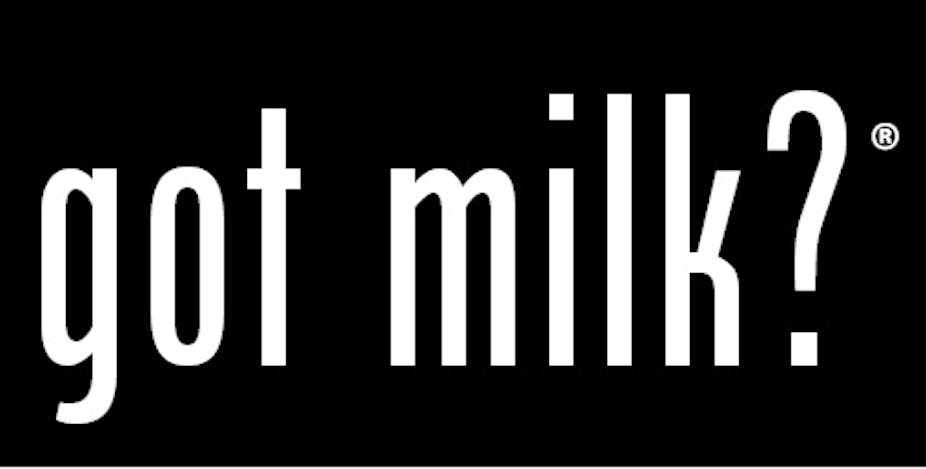From “Got Milk?” to “Just do it,” slogans and advertising phrases can come in the form of questions or statements. But which kind sells more products?
What if there had been “Got milk” or “Just do it?” campaigns? Would they have been equally effective in promoting milk and Nike?
My research forthcoming in the Journal of Consumer Psychology shows that this depends on the situation.
It all depends
A statement is more likely to convey clarity, but a question is more likely to engage the mind.
If consumers are experiencing high arousal (i.e., an excited or stimulated state) – perhaps stemming from a TV show, web page, sports event, social interaction, or other context – they tend to prefer clarity.
But under normal, calm conditions, they often appreciate questions, which invite them to think and reach their own conclusions. These need not be particularly deep or complex questions, but the mere presence of a question mark implies uncertainty or ambiguity, which can be enough to spark a little bit of curiosity and elaboration.
Human evolution and uncertainty
These tendencies are presumably rooted in our evolutionary past. Curiosity and an appreciation for interesting stimuli would have led our ancestors to learn and prosper. However, if an opportunity or threat sparked high arousal, this would often call for clear, immediate assessments.
For example, a person being attacked or whose prey is about to escape would typically benefit more from clear information to make snap judgments, even if interesting or ambiguous questions could be useful under calmer circumstances. People whose genes caused them to value interestingness under low arousal and clarity under high arousal would tend to survive, thrive, and ultimately pass on those genes.
Today, we might therefore expect calm consumers to appreciate questions and excited consumers to appreciate statements. Many other factors come into play, and one cannot predict the efficacy of an ad campaign based exclusively on this argument, but it suggests a tendency that should be observable in modern behavior.
Experiments with ordinary consumer products (pens and berries) supported this notion.
In one study, participants were exposed to an ad for a pen in which the ad copy stated, “The pen for you” or asked, “The pen for you?” At the same time, they were shown pictures of an exciting (e.g. a shark) or dull (e.g., an empty pool) nature. The participants who viewed the exciting images responded more favorably to the ad framed as a statement, but those who viewed the dull images responded more favorably to the ad framed as a question.
Purchasing in calm or excited states
In another study, I had placed an electronic ad display near strawberries in a Norwegian supermarket. When shoppers approached the strawberries, this device played music of a calm or arousing nature. It also displayed the Norwegian word for berries, punctuated by a period or a question mark. When the arousing music was playing, a higher percentage of shoppers exposed to the period purchased strawberries, as compared to those exposed to the question mark. However, when the calm music was playing, a higher percentage of shoppers exposed to the question mark purchased strawberries, as compared to those exposed to the period.
These findings suggest that communicators should keep the context in mind when framing a phrase as a question or a statement. For instance, ads might be embedded in calm or exciting material, and a given phrase can be framed to fit with that material. Similarly, political speeches and debates ebb and flow with changing levels of intensity, and politicians can frame their phrases to fit with the current atmosphere.
Asking or stating at the right time can make a difference in persuasive impact. The context might be less important once a phrase becomes a familiar slogan that is no longer processed as new information. However, even campaigns such as “Got milk?” or “Just do it” may get an initial boost if such phrases are introduced in the right context at the right time.

